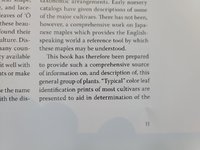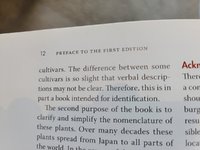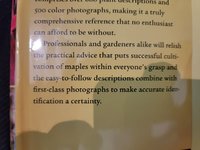A. Gorilla
Omono
Please consult a molecular scientist.
This thread is locked.
This thread is locked.
I have a kiyohime, i would say def not one. Is there a kiyohime and murasaki? Was thinking it was the same cultivarUnfortunately, a lot of hime can look like this, but at least it brings my guess closer, its either Tama Hime, murasaki kiyohime or kiyohime, and all of those dwarves are awesome.
Nishiki gawa?Hi to all, just bought a new acer, was wondering what cultivar this might be. Tiny leaves ,smaller than kiyohime, new groth look green. Also what might be the best course of action to turn it into a bonsai as it is a bit leggy
I have these two and they are similar but not the same. I don't know the other one.murasaki kiyohime or kiyohime
Nishiki gawa?
I seem to be creating a lot of ill will on the forums with this basic point, so I should probably just let it go. Ultimately I was trying to suggest that there is a world of difference between looking like something and being something.you should know that there are some people here who think it is inappropriate and actually literally impossible to identify a cultivar under any circumstances and for any reason.
This is obviously an extreme point of view, and somewhat silly when J.D. Vertrees devoted his life to making a book about identifying cultivars.
For your own information and enjoyment, obviously it's appropriate and entirely possible. I bought a Sawa chidori this year based on a cultivar id, and do you know what I got in the mail? A Sawa chidori! Was that just pure luck? Of course not!
Yeah , they are just a bit different In color and the window that they carry themI have a kiyohime, i would say def not one. Is there a kiyohime and murasaki? Was thinking it was the same cultivar
You position is the extreme and utterly incorrect one. Cultivars are clones. They are a specific genotype. You are wrong. If J.D. Vertrees actually made the claim that an unknown plant could be positively identified by its visual appearance alone, then he's wrong too. I doubt he truly meant that. I think you cherry picked some of his words, lacking sufficient context, and misinterpreted them. But, if he did mean that, then, sorry, but he's wrong about that one thing (which doesn't detract from the rest of the body of his work).@Mailo06, you should know that there are some people here who think it is inappropriate and actually literally impossible to identify a cultivar under any circumstances and for any reason.
This is obviously an extreme point of view, and somewhat silly when J.D. Vertrees devoted his life to making a book about identifying cultivars.
Why are you so angry? It's weird. In any case, you're wrong.I doubt he truly meant that. I think you cherry picked some of his words, lacking sufficient context, and misinterpreted them.


I’m not angry. I’m patiently explaining to you, once again, that you’re wrong about the feasibility of distinguishing with certainty between wild-type and a specific genotype via visual inspection alone.Why are you so angry? It's weird. In any case, you're wrong.. This couldn't be any clearer.
View attachment 449248
View attachment 449249
He could have saved a lot of time by just saying that identifying cultivars is impossible.
Good. I know that this was probably written by marketing people rather than the authors, but I wanted to share it anyway for the lolz.I’m not angry. I’m patiently explaining to you, once again, that you’re wrong about the feasibility of distinguishing with certainty between wild-type and a specific genotype via visual inspection alone.

I'm not going to try to explain it, other than to say what he wrote 44 years ago may not have been clear. I have never read that section to mean "use this book to take random Japanese maples and assign them to a cultivar" but rather "use this book as an identification guide to cultivars and their names and descriptions".He could have saved a lot of time by just saying that identifying cultivars is impossible.
Yeah, I saw that. It is nonsense.Good. I know that this was probably written by marketing people rather than the authors, but I wanted to share it anyway for the lolz.
LOL - no, though I talk about seedlings, I think the primary issue is that people get a JM and they are pretty positive it is a cultivar... of some type. Perhaps they got it from another bonsai enthusiast who simply "forgot" which cultivar it was? Or else they get it from a nursery where it has a noticeable graft and is in an area where all the other trees are labelled cultivars... but the tag on this one fell off?It is all very clear and I don't understand the contention. Seedlings are seedlings regardless of what they look like. It is immoral and deceptive and in many cases illegal to claim anything else.
Also, since the Vertrees book was written thousands of new JM cultivars have been introduced. I doubt Vertrees himself could have waded through the plethora of named maples today.
This maple identification thing comes up all the time and I haven't yet learned to look the other way. Its a car wreck.

If it is nice enough, people will start to refer to it as "X's Japanese Maple" and will want cuttings from it... even if it is not a known cultivar

